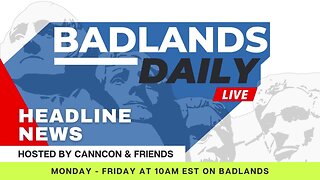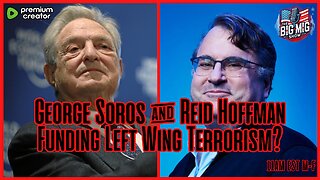Premium Only Content

The Battle of Midway: Japan’s Fatal Mistake WWII 1942
Six months after Pearl Harbor, the Empire of Japan stood triumphant. The Rising Sun stretched across the Pacific, from the jungles of Southeast Asia to the distant islands of the Central Pacific. Yet behind this brilliance, Japan faced a grim truth — the United States had not surrendered. Despite every victory, America’s industrial might loomed like a storm on the horizon. Japan knew that time was not on its side. It needed a decisive blow, one powerful enough to cripple American morale and force Washington to the negotiating table. The key lay with the U.S. Pacific Fleet — and more specifically, its aircraft carriers. Destroy the carriers, and Japan could control the Pacific unopposed. But how to lure them out from the safety of Pearl Harbor? The answer: attack a place the Americans would fight to defend. After long debate, the Imperial Navy’s high command chose a small atoll called Midway, 1,300 miles northwest of Hawaii. The plan was elegant in its simplicity — strike and occupy Midway, draw the American carriers into a trap, and annihilate them once and for all. It was named Operation MI. In tandem, a northern diversion called Operation AL would attack the Aleutian Islands to further confuse the enemy. By early June 1942, the Kido Butai — Japan’s elite carrier strike force — was steaming toward its destiny. Its commander, Vice Admiral Chuichi Nagumo, led four of Japan’s most powerful carriers: Akagi, Kaga, Soryu, and Hiryu. Together, they carried over 240 aircraft and the most skilled pilots in the world. The Akagi, Nagumo’s flagship, was a converted battlecruiser — fast, spacious, and deadly. Kaga, slower but heavily armed, carried the largest air group. Soryu and Hiryu, the younger, faster sisters of Carrier Division Two, were sleek and efficient, though lightly armored. Rear Admiral Tamon Yamaguchi commanded them, a bold and fiery contrast to Nagumo’s cautious, by-the-book temperament. Though Nagumo had little experience with naval aviation, he was the senior officer and commanded the First Air Fleet by rank. The Kido Butai had proven unstoppable at Pearl Harbor, the Indian Ocean, and the Philippines. Now it was ready for its greatest test. Their mission was twofold: first, destroy Midway’s airfields and defenses ahead of the invasion convoy arriving two days later. Second, remain ready to destroy any American carriers that appeared. To achieve surprise, Nagumo’s fleet sailed under radio silence across 3,000 miles of open ocean. But signs of trouble were already appearing. Japanese intelligence noted unusual American activity around Midway — far more than expected. Still, with their submarine picket line reporting nothing, Nagumo believed the enemy carriers remained safely in Pearl Harbor. Confident, he pressed on. June 4th, 1942 — dawn broke over a calm Pacific. The sea shimmered beneath scattered clouds as the Kido Butai turned into the wind to launch its first wave. At 4:30 a.m., in just ten minutes, 108 aircraft thundered into the air, bound for Midway. It was a flawless launch — precision and discipline born from years of training.
-
 1:53:27
1:53:27
Benny Johnson
2 hours ago🚨House Voting to Release Epstein Files as Trump Plan REVEALED, Democrat PANIC: ‘It Was All A Trap…’
52.7K45 -
 47:12
47:12
theoriginalmarkz
2 hours agoCoffee with MarkZ. 11/18/2025
32.8K6 -
 1:36:43
1:36:43
Graham Allen
4 hours agoDisturbing Connection Between Trump Shooter And FURRIES!! + House Votes To Release Epstein Files!
159K833 -
 2:59:36
2:59:36
Wendy Bell Radio
8 hours agoIt's All Connected.
80.1K82 -
 1:56:58
1:56:58
Badlands Media
6 hours agoBadlands Daily: November 18, 2025 - Internet Outage, Epstein Crossfire & the MBS Power Shift
45.9K10 -
 LIVE
LIVE
Major League Fishing
5 days agoLIVE! - Fishing Clash Team Series: Summit Cup - Day 3
102 watching -
 1:13:28
1:13:28
The Big Mig™
4 hours agoBusted, Antifa Funding Bombshell
8.2K12 -
 24:50
24:50
Simply Bitcoin
17 hours ago $2.15 earnedEXCLUSIVE: Tether CEO Reveals Bitcoins Next Move | Paolo Ardoino
19.7K6 -
 1:06:55
1:06:55
Chad Prather
15 hours agoThe Habits That Make Believers Unstoppable
90.9K52 -
 40:09
40:09
ZeeeMedia
20 hours agoTrump Reverses on Epstein Files & UK Govt Caught in Deadly COVID Shot Lie | Daily Pulse Ep 145
30.2K32